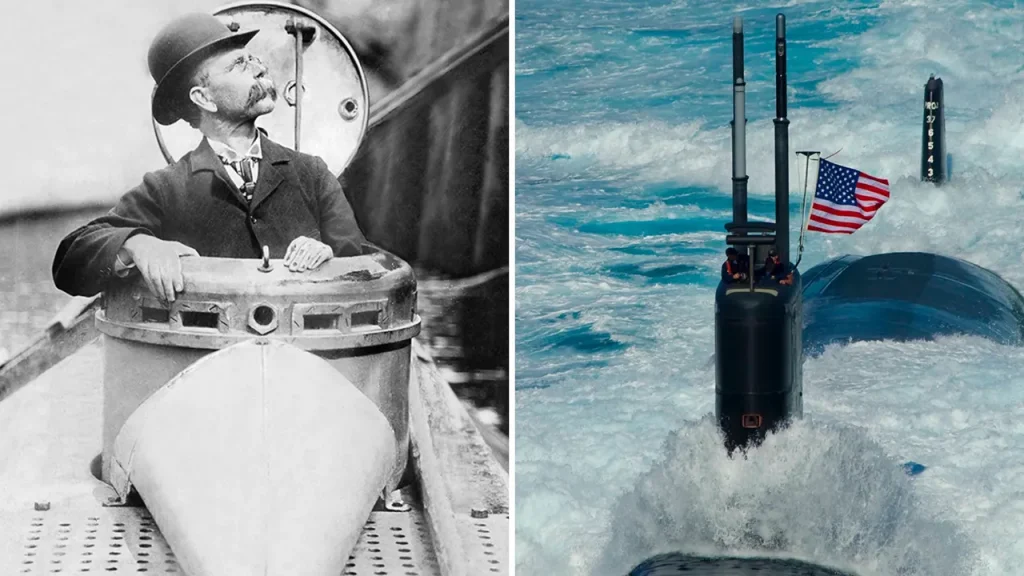Born in Ireland in 1841, John Philip Holland became known as “the father of the modern submarine.” Despite a lack of formal training, he succeeded in designing submarines that revolutionized naval warfare. After moving to the United States, Holland received support from the American Fenian Society to build submarines, leading to the creation of the Fenian Ram in 1881. His designs incorporated innovative features such as rudder planes and dual power systems. However, Holland faced financial and business challenges, ultimately losing control of his company to Isaac Rice, who transformed it into Electric Boat, now part of General Dynamics.
Holland’s submarines were ahead of their time and marked a significant advancement in military technology. The USS Holland, the first U.S. Navy submarine, was commissioned in 1900, inspiring other nations to develop their own submarine fleets. Despite his contributions to naval warfare, Holland struggled financially and died penniless in 1914. His legacy lives on in various tributes, including memorials, street names, and a charter school named after him. Holland’s impact on submarine design and warfare is commemorated in museums and history books, acknowledging his remarkable achievements despite his challenges.
Holland was driven by a desire to use submarines for peaceful purposes, incapacitating enemy warships rather than destroying them. His commitment to innovation and dedication to submarine technology laid the foundation for modern naval warfare. Although he faced setbacks and financial exploitation, Holland’s legacy as a pioneer in submarine design remains significant. His vision and perseverance led to the development of submarines that changed the course of naval history, influencing future generations of engineers and naval strategists.
Holland’s early life in Ireland, marked by poverty and famine, inspired his passion for engineering and invention. His Irish heritage and patriotism influenced his decision to use submarines to further the cause of Irish Independence. Despite his lack of formal education, Holland’s innate engineering abilities and creativity propelled him to success in designing submarines. His interest in undersea exploration was influenced by historical events, such as the American Civil War and works of fiction like Jules Verne’s “20,000 Leagues Under the Sea.”
Holland’s journey from Ireland to the United States and his subsequent collaborations with benefactors and partners reflect a resilient spirit and unwavering dedication to his vision. His creation of submarines capable of navigating underwater and surfacing marked a turning point in naval technology. While he faced challenges in business and financial matters, Holland’s impact on submarine design and warfare cannot be understated. His contributions to the development of modern submarines are recognized and celebrated today, ensuring that his legacy endures for future generations to appreciate his groundbreaking achievements.
In conclusion, John Philip Holland’s remarkable achievements as an inventor and engineer have left an indelible mark on naval warfare and technology. Despite facing adversity and financial hardships, he persevered in his pursuit of designing submarines that changed the course of history. Holland’s legacy as the father of the modern submarine is honored in various tributes and memorials, showcasing his enduring impact on naval innovation. His story serves as a testament to the power of ingenuity, determination, and vision in overcoming challenges and shaping the future of technology and warfare.


